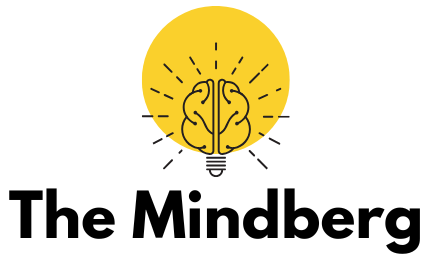Alcoholic hallucinosis is a psychiatric condition that involves hallucinations occurring during or shortly after heavy alcohol consumption.
Hallucinations are sensory experiences that appear real but are created by the mind. Unlike delirium tremens (DTs), which often present with more severe symptoms such as confusion and seizures, alcoholic hallucinosis is marked primarily by vivid auditory, visual, or tactile hallucinations.
Understanding this disorder requires delving into the mechanisms of alcohol and its effects on the brain, as well as exploring the link between alcohol use and mental health disorders. This blog aims to shed light on the relationship between alcohol and hallucinations, how it manifests, the potential causes, and how it can be managed.
The condition occurs most commonly in individuals who have been drinking heavily for extended periods, particularly those with a history of alcohol dependency. It is important to distinguish alcoholic hallucinosis from other conditions that may cause hallucinations, such as schizophrenia, substance-induced psychosis, or withdrawal delirium.
Alcoholic hallucinosis represents a specific interaction between alcohol and the brain’s neurochemistry, which can lead to the development of psychotic symptoms like hallucinations. While the exact mechanisms are still being studied, it is clear that alcohol has a direct impact on brain chemistry, especially when consumed in large quantities over time.
In this article, we will explore the causes of alcoholic hallucinosis, its symptoms, and the risks associated with prolonged alcohol use. We will also discuss effective treatment strategies for managing this condition and ways to reduce the likelihood of its occurrence.
By understanding the link between alcohol and hallucinations, individuals can make more informed decisions about alcohol consumption and better recognize the warning signs of more severe alcohol-related disorders.
The Neurochemistry Behind Alcoholic Hallucinosis
Alcohol’s effects on the brain are both complex and far-reaching. It primarily affects the central nervous system by altering neurotransmitter activity, which influences mood, cognition, and perception.
One of the key neurotransmitters involved is gamma-aminobutyric acid (GABA), an inhibitory neurotransmitter that dampens brain activity. Alcohol enhances GABA’s effects, leading to a sedative and calming effect.
However, with prolonged alcohol use, the brain adapts to these chemical changes. The production of GABA decreases, and the excitatory neurotransmitter glutamate becomes more active.
This imbalance between inhibitory and excitatory neurotransmitters is thought to contribute to the onset of hallucinations in some individuals. Specifically, when alcohol is abruptly withdrawn or consumed in large amounts, the brain’s neurochemical systems may become dysregulated, leading to the development of alcoholic hallucinosis.
Alcoholic hallucinosis is thought to be triggered by these neurochemical imbalances, particularly in the context of alcohol withdrawal or a history of alcohol abuse. The auditory hallucinations that are most common in alcoholic hallucinosis are believed to stem from disturbances in brain areas responsible for hearing and perception. These disturbances can cause the brain to misinterpret external stimuli or generate entirely fabricated experiences.
Understanding the neurochemical mechanisms behind alcoholic hallucinosis is important for developing targeted treatments and interventions. It also highlights the importance of early intervention and proper management of alcohol use to prevent further damage to the brain’s neural networks.
Symptoms of Alcoholic Hallucinosis
Alcoholic hallucinosis is characterized by vivid hallucinations that typically occur during or after a period of heavy alcohol consumption. The symptoms can vary in severity and may involve one or more types of hallucinations, including auditory, visual, or tactile experiences.
Auditory hallucinations, where individuals hear voices or sounds that are not actually present, are the most common type of hallucination associated with this condition. These voices may be malevolent or benign, but they often cause significant distress to the individual.
In addition to auditory hallucinations, some individuals with alcoholic hallucinosis may experience visual hallucinations, such as seeing objects or people that are not there. These visual disturbances can range from simple shapes or shadows to more elaborate and disturbing scenes. Tactile hallucinations, in which individuals feel sensations that do not have an external source, are less common but still possible.
Another hallmark symptom of alcoholic hallucinosis is the occurrence of these hallucinations without the presence of confusion or disorientation, which differentiates this condition from other alcohol-related disorders such as delirium tremens. Unlike DTs, where individuals are often disoriented and confused, those with alcoholic hallucinosis may retain a level of cognitive clarity while experiencing hallucinations.
While hallucinations are the primary symptom, individuals with alcoholic hallucinosis may also experience anxiety, agitation, and mood swings, as the brain struggles to maintain a sense of reality. The combination of these symptoms can significantly impair daily functioning and lead to further psychological distress.
The Link Between Alcohol Dependency and Hallucinations
Alcohol dependency plays a crucial role in the development of alcoholic hallucinosis. Chronic alcohol abuse leads to changes in brain chemistry and structure, making the brain more vulnerable to disturbances in neurotransmitter activity.
These neurochemical changes, particularly in areas of the brain responsible for perception and sensory processing, may predispose individuals to hallucinations.
People with alcohol dependency often experience withdrawal symptoms when they reduce or stop drinking, and the likelihood of hallucinations increases during this withdrawal phase. Alcohol withdrawal syndrome (AWS) can trigger a variety of symptoms, including tremors, seizures, and confusion, but in some cases, it also leads to the onset of hallucinations. It is during these periods of withdrawal or prolonged alcohol consumption that alcoholic hallucinosis is most likely to manifest.
The severity of hallucinations may be influenced by factors such as the duration and intensity of alcohol abuse, as well as the individual’s general physical and mental health. Those with long-term alcohol use disorder are particularly at risk of experiencing hallucinations, as the cumulative effects of alcohol on the brain can lead to significant neurodegeneration.
The connection between alcohol dependency and hallucinations underscores the importance of early intervention and treatment for individuals struggling with alcohol use disorder. By addressing alcohol dependency through rehabilitation and therapy, individuals can reduce the risk of developing alcoholic hallucinosis and other alcohol-related psychiatric conditions.
Risk Factors for Developing Alcoholic Hallucinosis
Several factors increase the risk of developing alcoholic hallucinosis. First and foremost, a history of chronic alcohol abuse or alcohol dependency significantly raises the likelihood of experiencing hallucinations. The longer an individual has been consuming large quantities of alcohol, the more susceptible they may be to neurochemical imbalances that lead to hallucinations.
Other risk factors include having a history of alcohol withdrawal, particularly severe withdrawal episodes. Individuals who have experienced multiple episodes of alcohol withdrawal are at a higher risk of developing hallucinations, as their brain becomes increasingly sensitive to the fluctuations in neurotransmitter levels.
Additionally, individuals with a family history of mental health disorders, particularly psychotic conditions, may be more likely to develop alcohol-related hallucinations. Genetic predispositions can influence how alcohol affects the brain, increasing vulnerability to psychiatric symptoms like hallucinations.
Other factors, such as the presence of other medical conditions, poor nutrition, or the use of other substances, may further exacerbate the risk of alcoholic hallucinosis. For instance, the concurrent use of drugs that affect the central nervous system or a history of brain injury may increase the chances of developing hallucinations during alcohol consumption or withdrawal.

